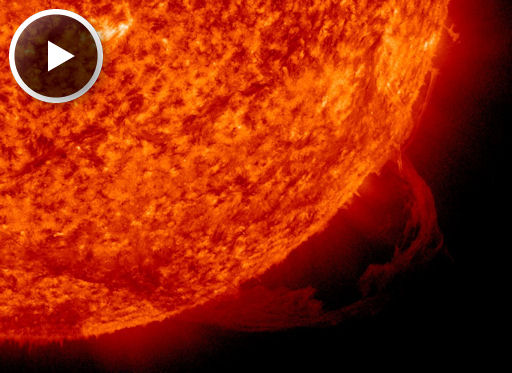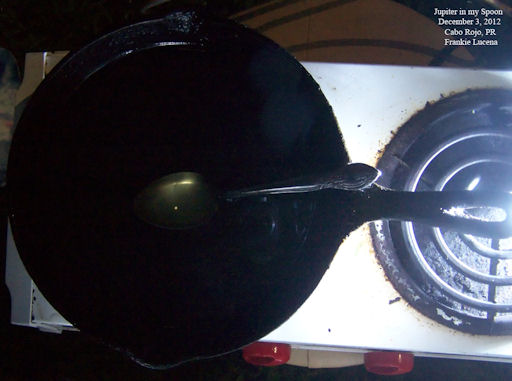Thirty-five new items have just been added to our Meteorite Jewelry collection. Browse the Space Weather Store for something out of this world. | | |
SLIGHT CHANCE OF STORMS: NOAA forecasters estimate a 25% chance of polar geomagnetic storms on Dec. 7th and 8th in response to a possible glancing blow from a CME. Sky watchers in Scandinavia, Canada, and Alaska should be alert for auroras. Geomagnetic storm alerts: text, voice.
FILAMENT ERUPTION: A filament of magnetism snaking more than 400,000 km around the sun's southwestern limb became unstable and erupted on Dec. 6th. NASA's Solar Dynamics Observatory recorded the filament flinging a portion of itself into space:

The Solar and Heliospheric Observatory (SOHO) detected a cloud of plasma emerging from the blast site; however, Earth does not appear to be in the line of fire.
This event interrupted three days of low solar activity. With no sunspots currently flaring, the quiet appears set to resume. NOAA forecasters estimate a mere 1% chance of strong flares in the next 24 hours.
Realtime Space Weather Photo Gallery
JUPITER IN A SPOON: Jupiter is supposed to be a giant planet. Yet on Dec. 3rd, Frankie Lucena of Cabo Rojo, Puerto Rico, found it contained entirely inside a kitchen spoon. "Jupiter is so bright," he says, "that I caught it reflecting from a spoon filled with vegetable oil inside by my cast iron skillet."

Catching Jupiter in a spoon is possible this month because Jupiter is having a close encounter with Earth--the closest until 2021. The giant planet rises in the east at sunset, brighter than any other "star" in the sky, so bright that its reflection can be found in unusual places. For readers who would like to try this at home, Lucena notes that he took the picture using an off-the-shelf digital camera set at ISO 400 for 8 seconds. [sky map]
Bonus physics: What if you did compress Jupiter to the size of a teaspoon? It would become a black hole. The Schwarzschild Radius of Jupiter is approximately 3 meters. Any object squeezed into a space smaller than its Schwarzschild Radius becomes a black hole. Luckily for Lucena, the planet in his kitchen was just a reflection.
Realtime Jupiter Photo Gallery
Realtime Aurora Photo Gallery
Realtime Noctilucent Cloud Photo Gallery
[previous years: 2003, 2004, 2005, 2006, 2007, 2008, 2009, 2011]
Potentially Hazardous Asteroids (
PHAs) are space rocks larger than approximately 100m that can come closer to Earth than 0.05 AU. None of the known PHAs is on a collision course with our planet, although astronomers are finding
new ones all the time.
On December 7, 2012 there were potentially hazardous asteroids.
Notes: LD means "Lunar Distance." 1 LD = 384,401 km, the distance between Earth and the Moon. 1 LD also equals 0.00256 AU. MAG is the visual magnitude of the asteroid on the date of closest approach. | | The official U.S. government space weather bureau |
| | The first place to look for information about sundogs, pillars, rainbows and related phenomena. |
| | Researchers call it a "Hubble for the sun." SDO is the most advanced solar observatory ever. |
| | 3D views of the sun from NASA's Solar and Terrestrial Relations Observatory |
| | Realtime and archival images of the Sun from SOHO. |
| | from the NOAA Space Environment Center |
| | the underlying science of space weather |

